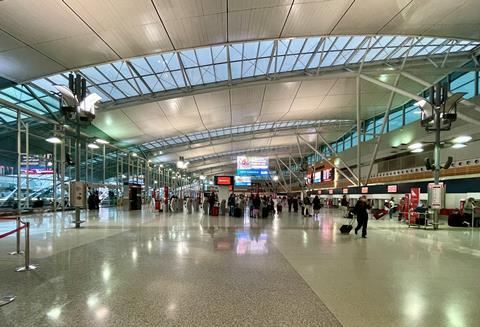While current efforts in Australia to reform slot allocation are “important”, the head of Airports Council International (ACI) Asia-Pacific and Middle East warns that resolving the slot issue will not be a “panacea” for current challenges surrounding air traffic recovery.
Speaking at a wide-ranging media roundtable in Singapore, Stefano Baronci adds that there are “several other issues” regulators and airport authorities “have to foresee” in the longer term beyond merely slot reform, such as the use of new technologies and the efficient use of slots.
![[Photo] Stefano Baronci](https://d3lcr32v2pp4l1.cloudfront.net/Pictures/480xany/7/1/1/104711_photostefanobaronci_621329.jpg)
His comments come amid plans by the Australian government to reform Sydney airport’s slot allocation system, including freeing up more take-off and landing slots and easing barriers for new operators.
The challenge of accessing slots at Sydney airport cropped up again in recent months, following two high-profile airline failures.
Australian operator Regional Express (Rex) entered voluntary administration and axed its mainline domestic operations in early August. It had begun mainline domestic operations between Australia’s major cities – including Sydney – in 2021, but had found it difficult to access slots at Sydney, which limited its competitive prospects.
Similarly, now-shuttered low-cost operator Bonza had said it was unable to gain slots to operate to Sydney. The short-lived carrier collapsed in May after it was unable to secure sufficient funding to pay off debts.
Says Baronci: “I think it is important the authorities are addressing this issue, because…it has been a critical [issue] before [the pandemic] and will be [even more] critical in the future.”
While he declined to elaborate on the details of the ongoing discussions, he notes: “The positive tensions, discussions…that we are having…demonstrates that there is capacity to incrementally improve the principles of slot allocation.”
In 2023, the trade body had urged “local-level” engagement on airport slot regulations, reiterating that global slot guidelines were crucial to manage scarce airport capacity. It also called on local governments to “ensure that slot rules best meet the realities of each market and offer adaptable solutions as required to address specific challenges and opportunities”.

On slot reform, Baronci believes “the tool must be proportionate to the task.” Elaborating, he says: “There are some super congested airports. The question is, [are] the [current] requirements still up to the task?”
He stresses that slot reforms should not be viewed as a “panacea…for sorting out the problems” facing the air travel sector.
“It would be a false or wrong expectation to think that optimising the existing capacity [through slot reform] is the major solution for addressing the needs of the passengers in Asia, because really, you need a supply that is ahead of the demand,” he says.
He notes that Asia-Pacific is set to lead air traffic growth in the next 15 years, more than doubling in passenger volumes compared to 2019 levels.
ACI data on total passenger traffic volume, three of the top 10 country markets are in Asia in 2023, with Indonesia, Thailand and Vietnam set to join the list over the next 20 years.
To this end, Baronci also observes that while there are “mega-cities located in Asia, not all the mega-airports” are in the region, a sign that “not all mega-cities” prioritise “big infrastructure” investments.
However, he notes that airport expansion – and greenfield airport projects – are continuing apace in the region, with the ACI forecasting airport capital expenditure in Asia-Pacific to hit about $1.3 trillion by 2040, more than half of the global total.


























